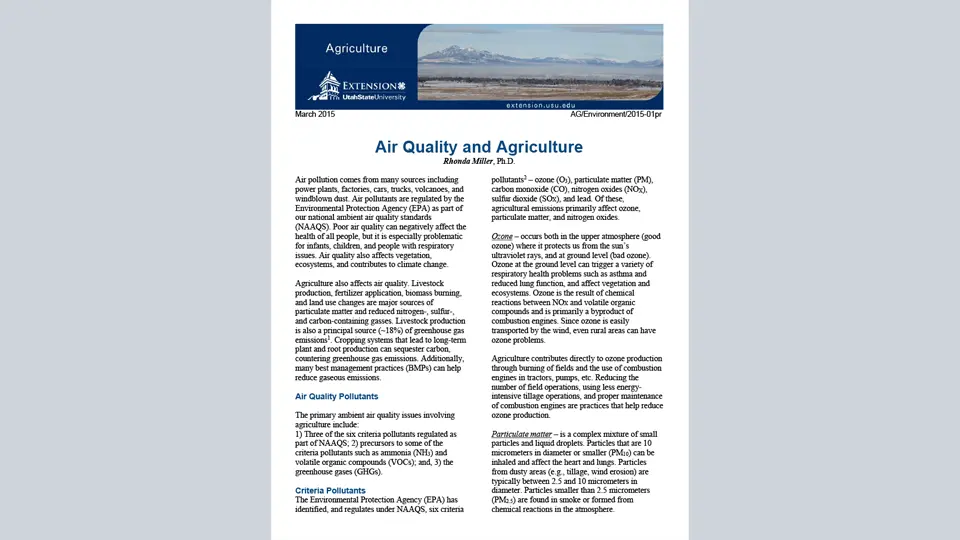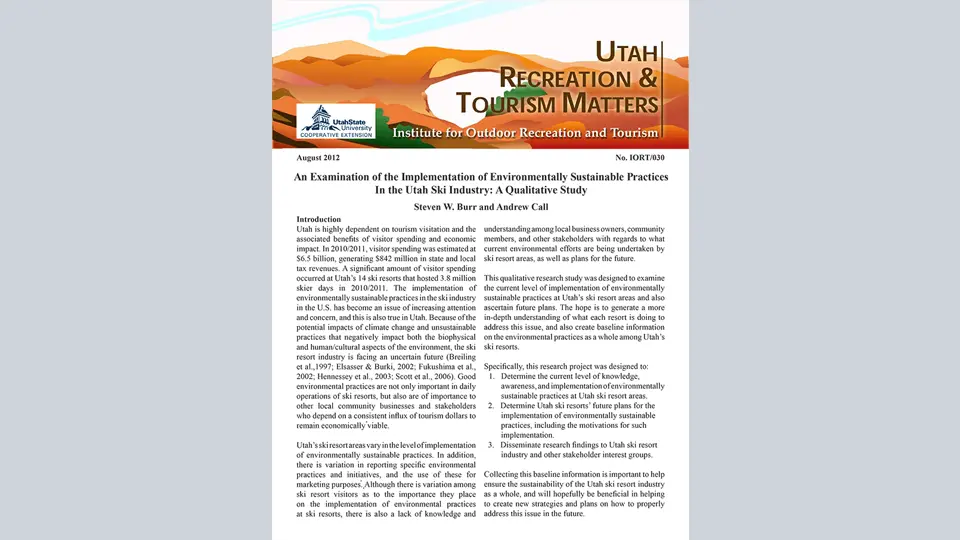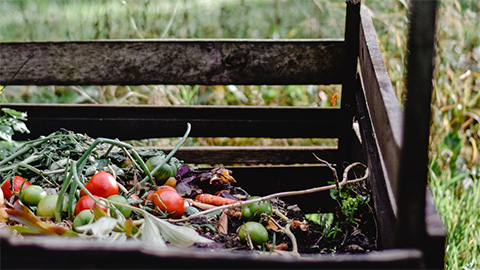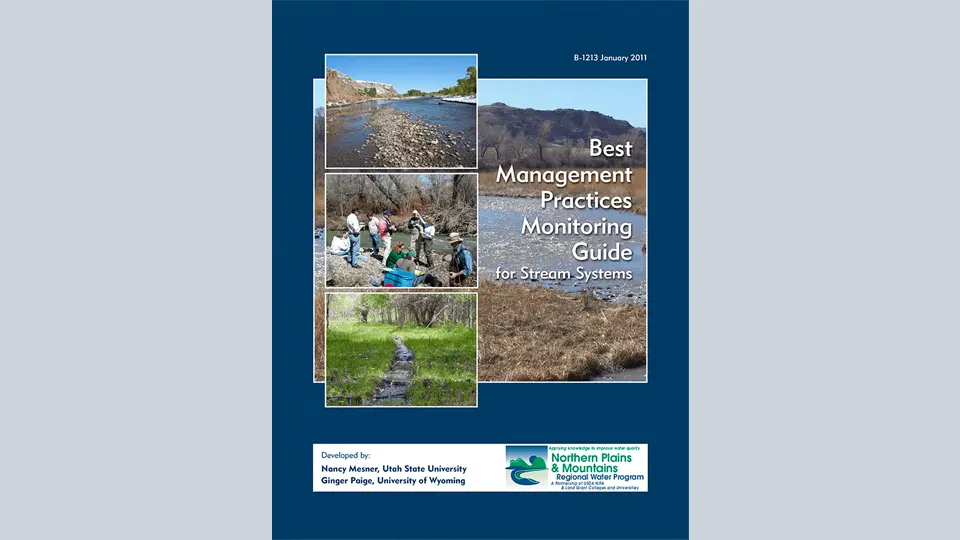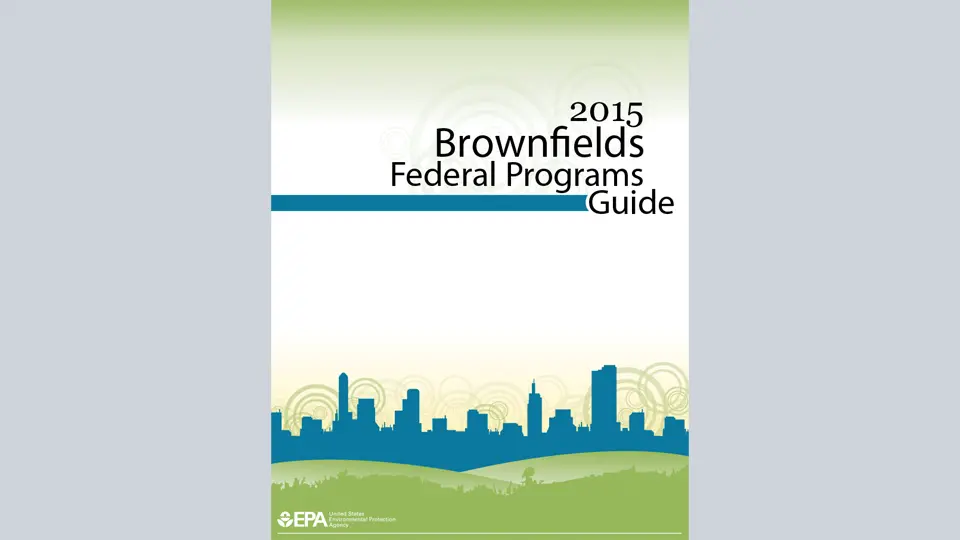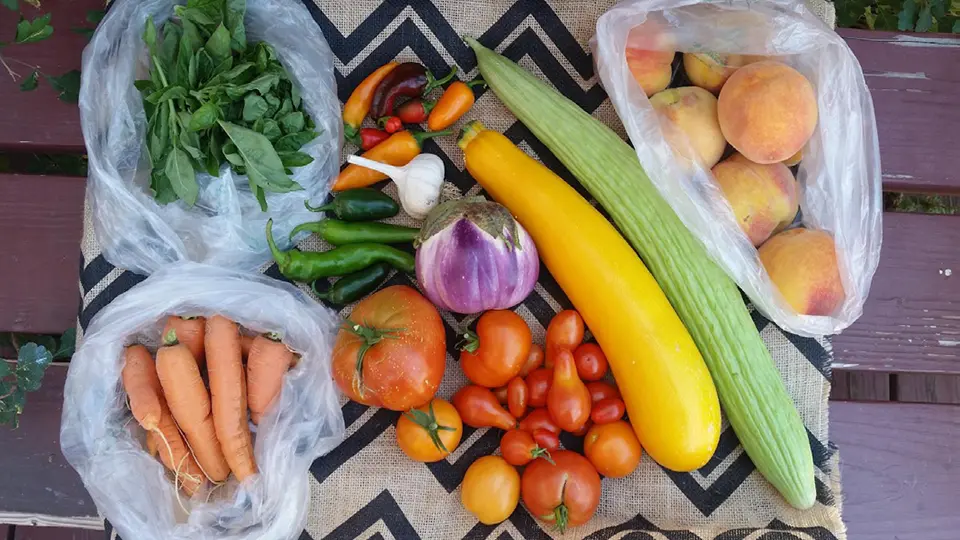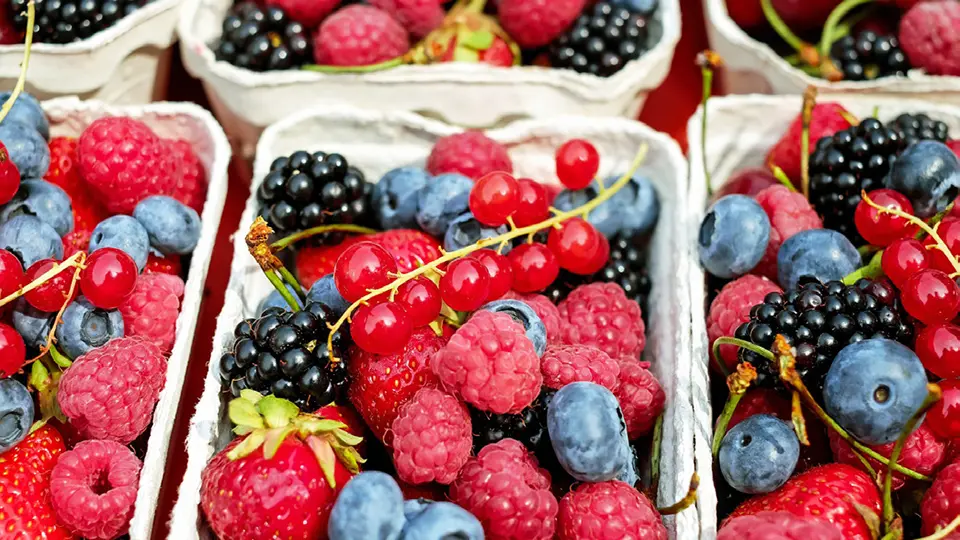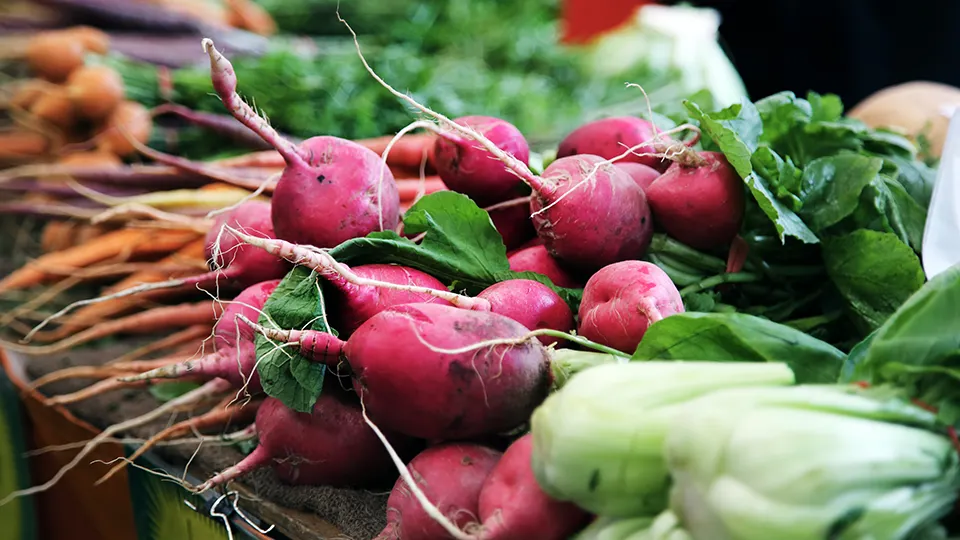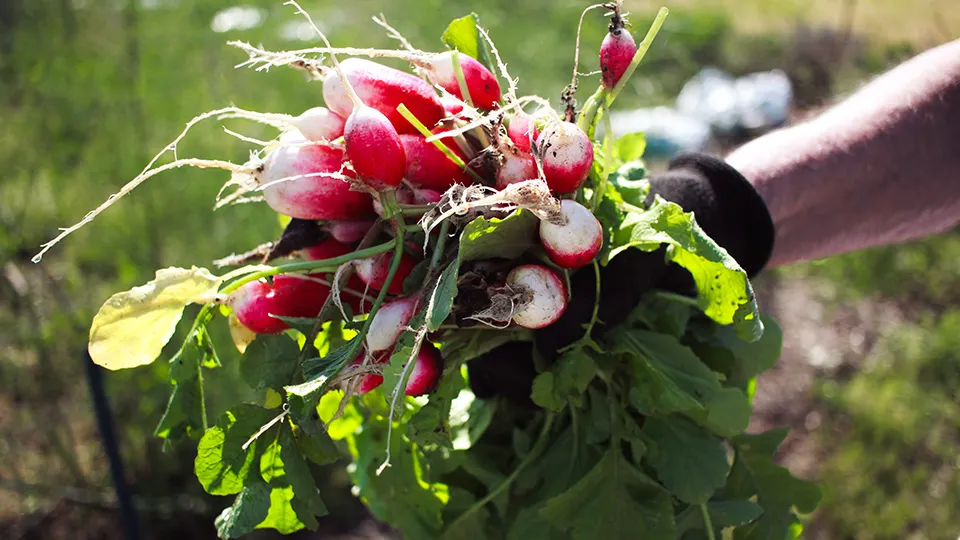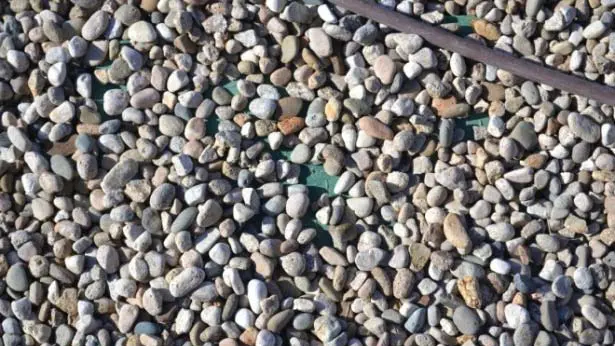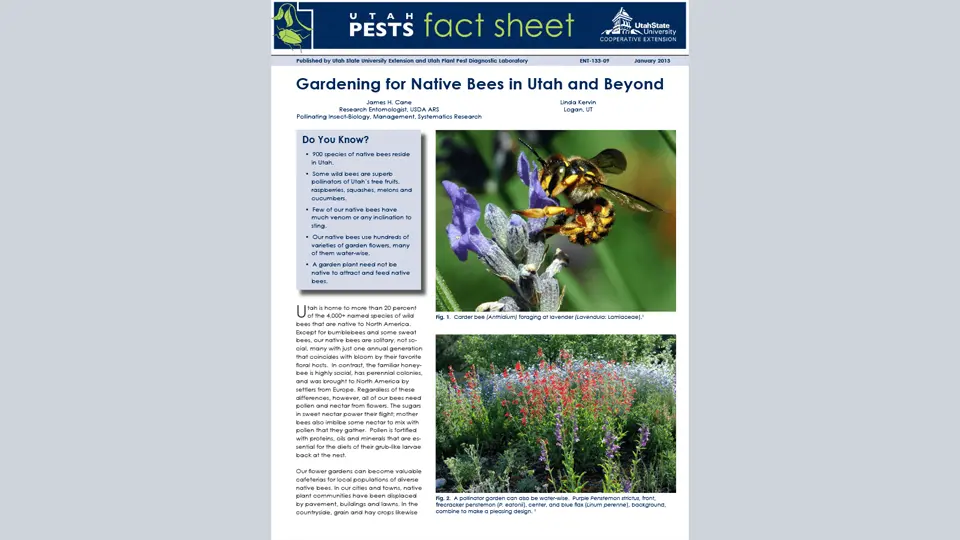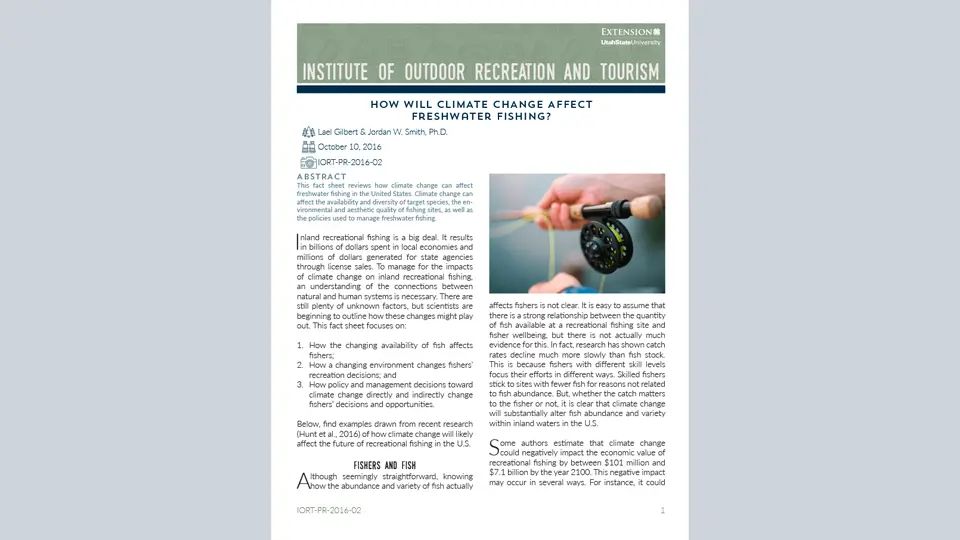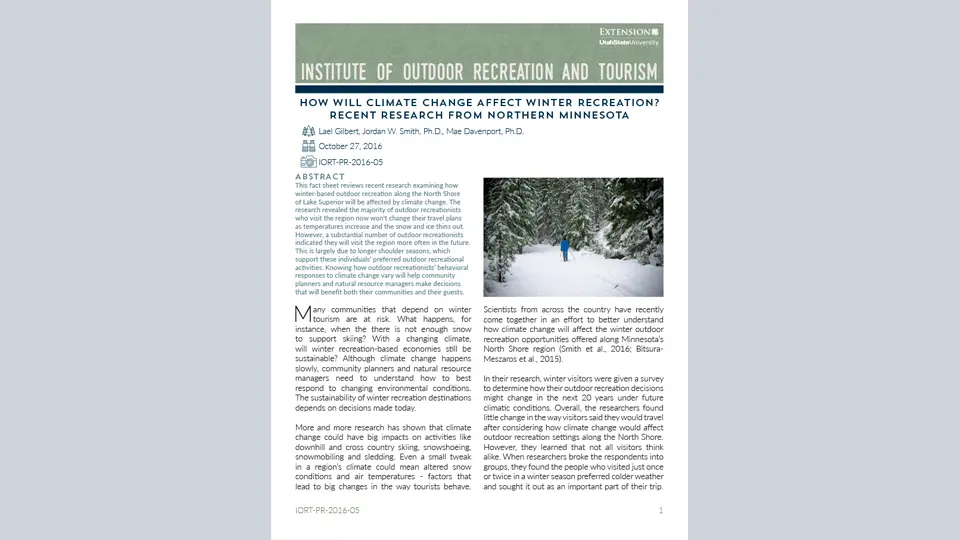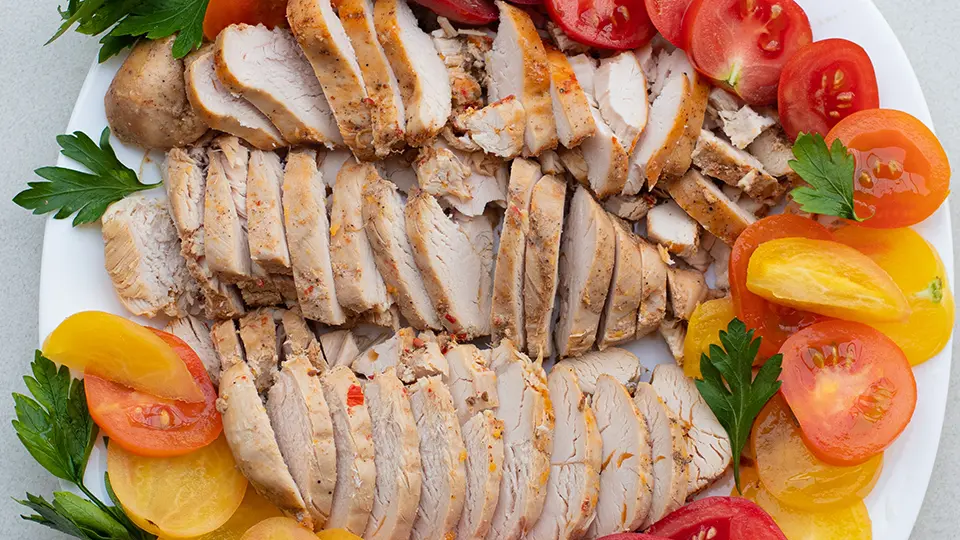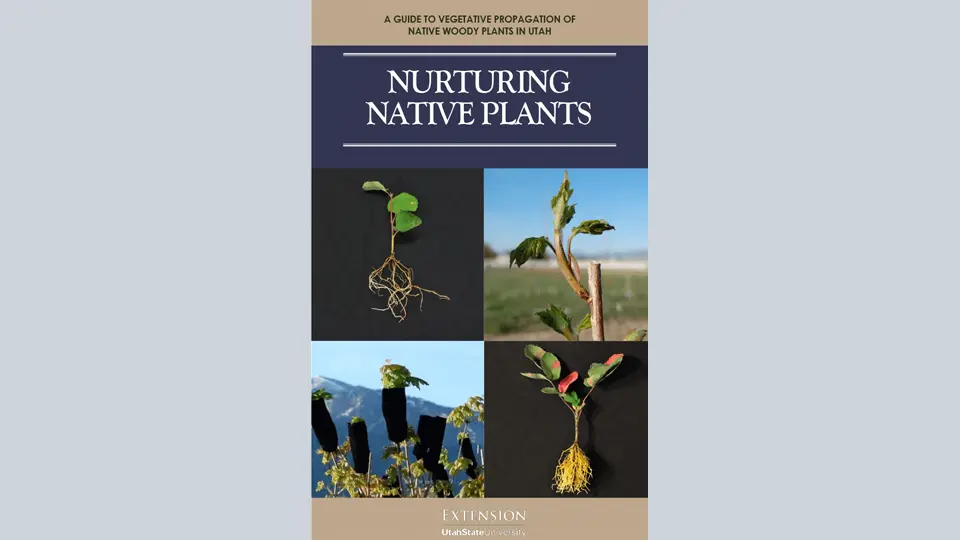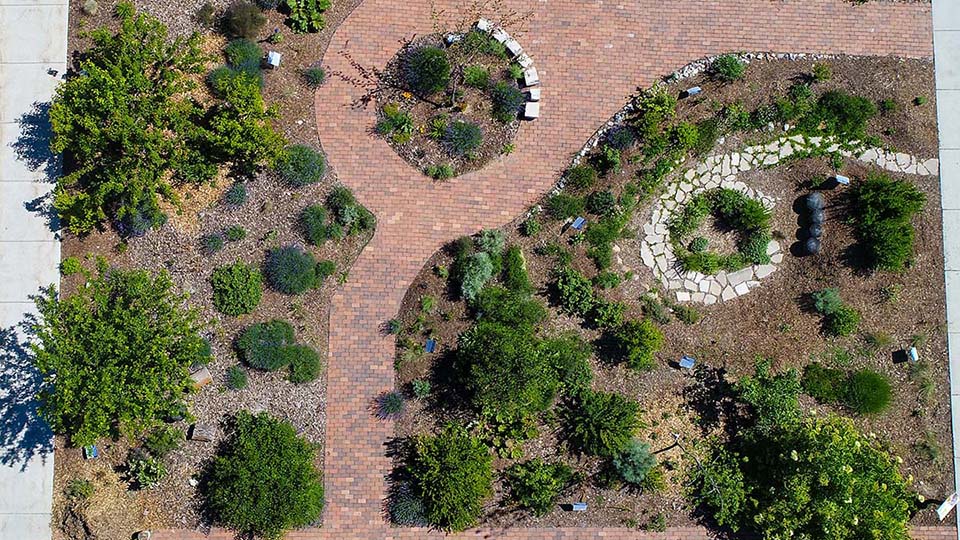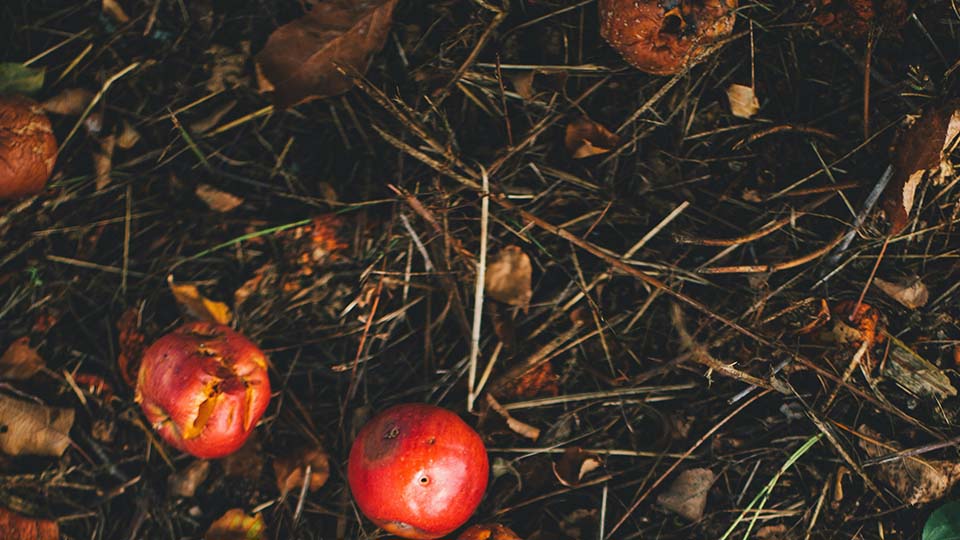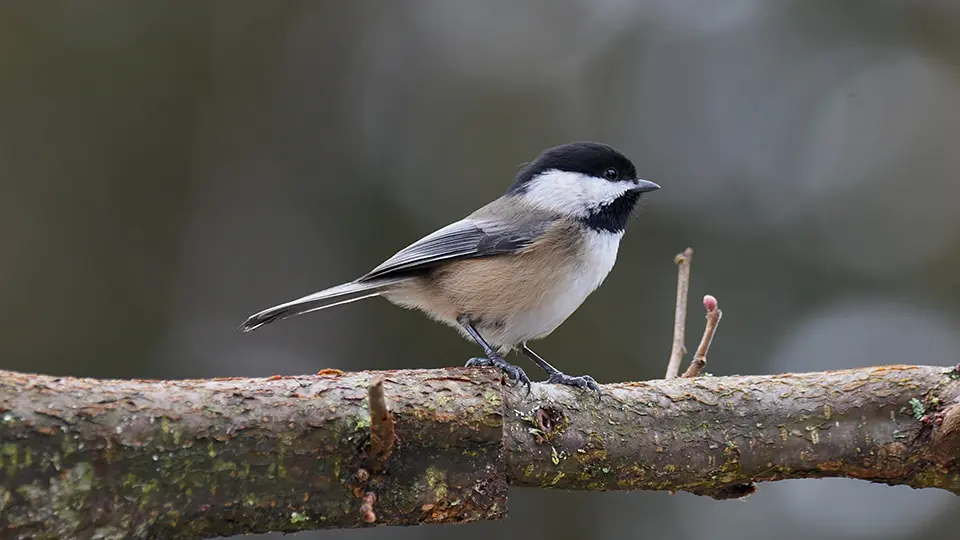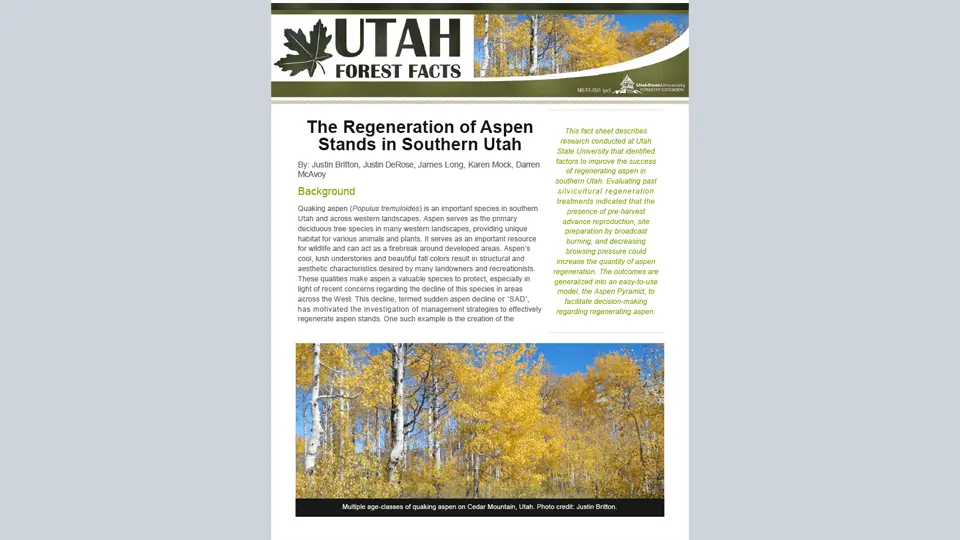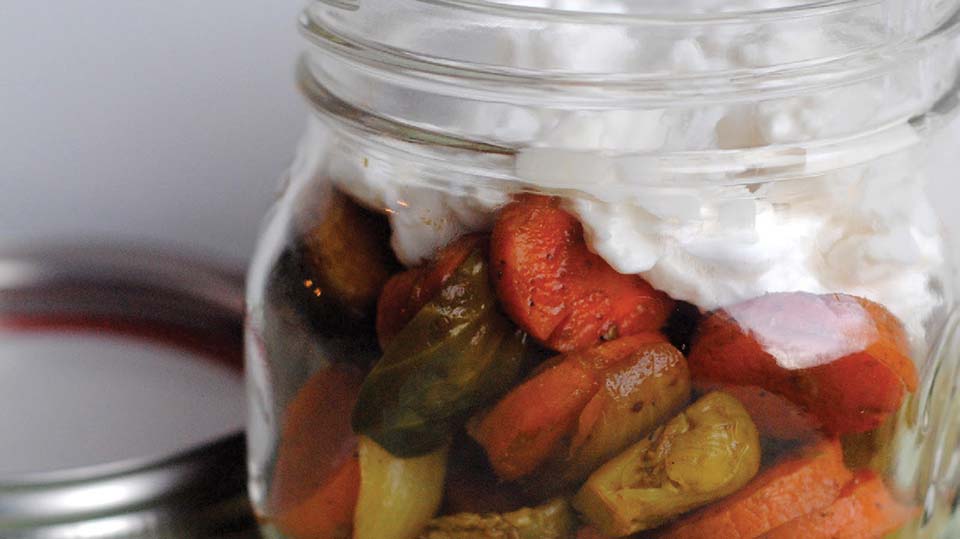Graywater Systems

Defining Terms: Graywater, Blackwater and Clearwater
Why irrigate only with treated drinking water when you can supplement your irrigation needs through an effective graywater system?
The Utah Office of Administrative Rules defines graywater (accepted spelling also includes greywater and gray water) as “wastewater from bathtubs, showers, bathroom washbasins, clothes washing machines, or laundry tubs. Graywater does not include wastewater from toilets, kitchen sinks, photo lab sinks, dishwashers, water softeners, garage floor drains, or other sources that pose a public health hazard” (2020, R317-401-2). In Utah, toilet, kitchen sink and dishwasher water are categorized as “blackwater”.
Graywater is an abundant resource in both residential and commercial buildings. According to Brad Lancaster of Rainwater Harvesting for Drylands and Beyond, “graywater harvesting is the practice of directing graywater to the primary root zone (top 2 feet or 0.6m of the soil) of perennial plants to help grow beautiful and productive landscapes while achieving wastewater treatment without using energy or chemicals. Plants and microorganisms in the soil consume and filter the organic nutrients and bacteria found in graywater, treating it naturally and returning clean water to the water cycle” (2010, p.294). Though not suitable as drinking water, graywater can be used for irrigation, even for growing fruit on trees and shrubs with woody stems that serve as additional filters for any contaminants that may be present.
Clearwater is solid-free wastewater which includes water produced while waiting for hot water from the faucet to heat up, refrigerator compressor drip, swamp cooler and air conditioning ‘sweat,’ and more. Clearwater, like graywater, is an underutilized landscape irrigation resource ripe for harvest in most commercial buildings and homes.
Why take the time to establish a system for graywater and clearwater use? A primary answer is: resource abundance in light of anticipated hotter, drier weather in the Southwest (Brain, Adams, & Lynch, 2017). The arid West has some of the highest per capita residential water use due to landscape irrigation (EPA, 2018). For example, irrigation accounts for around 72% of Utah’s and 82% of Idaho’s water use (Milligan, 2018). The Pie Chart on the next page shows that 50-60% of average residential indoor water use could become potential graywater sources. The secondary use of at-home graywater and clearwater resources can help offset high rates of water consumption and associated municipal water costs.
Advantages of Graywater
Graywater use results in:
- Effective water treatment (graywater is treated in the upper, most biologically active region of the soil);
- Reduced use of ground and surface water resources for landscape irrigation;
- Reduced use of energy and chemicals for water and wastewater treatment;
- Improved plant growth;
- Reclamation of nutrients (also, wastewater disposal in rivers/oceans is a significant form of pollution);
- Increased awareness of natural cycles and personal water usage; and
- Landscape irrigation source in preparation for potential future drought irrigation restrictions.
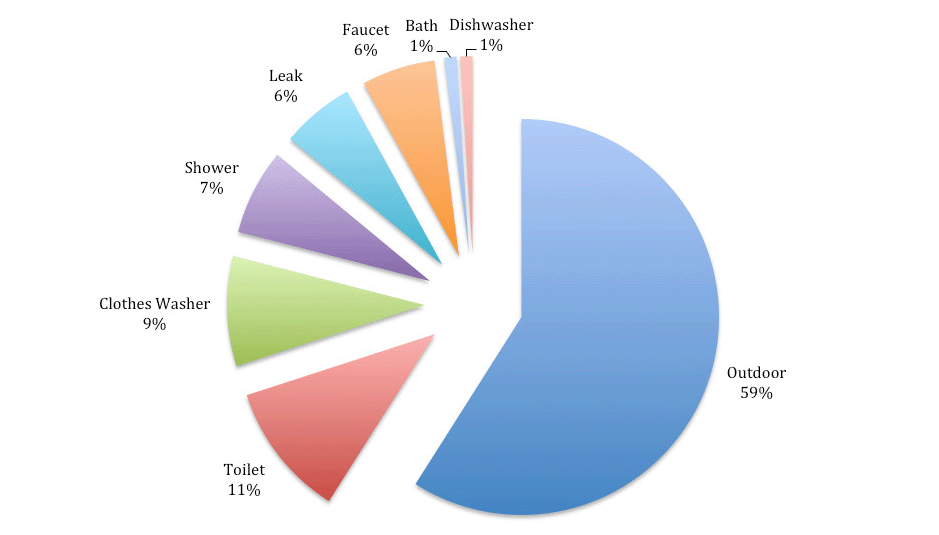
Graywater in Utah
In 2004, the Utah Water Quality Board adopted a rule (R317) allowing the use of graywater from baths, showers, bathroom sinks and washing machines for residential drip irrigation systems. Walt Baker, past director of the Utah Division of Water Quality, said the graywater legislation was “brought to a head by the drought, which prompted us to be more aggressive and put the new rule in place” (W. Baker, personal communication, August 29, 2014). Due to restrictiveness of the 2004 rule, in 2020, Utah’s graywater rule was revised to allow for simple gravityfed systems and for use in non-residential applications. The revisions recategorize graywater into two types of systems: Tier 1 and Tier 2:
Tier 1 (Residential Only): A gravity-fed graywater system without a surge tank, pretreatment, or pressurized components. A Tier 1 system is intended to be simple to operate and can be easily disconnected during winter months or other periods when the system may not be in use. This may also be appropriate for retrofitting.
Tier 2 (Multi-Family and Commercial): A graywater system that employs a surge tank, pretreatment, drip line irrigation system, or pressurized components (Utah Office of Administrative Rules, 2020).
Did you know?
In 1989, the County of Santa Barbara became the first jurisdiction in the United States to change its building codes and legalize the use of household greywater.
Graywater System Components
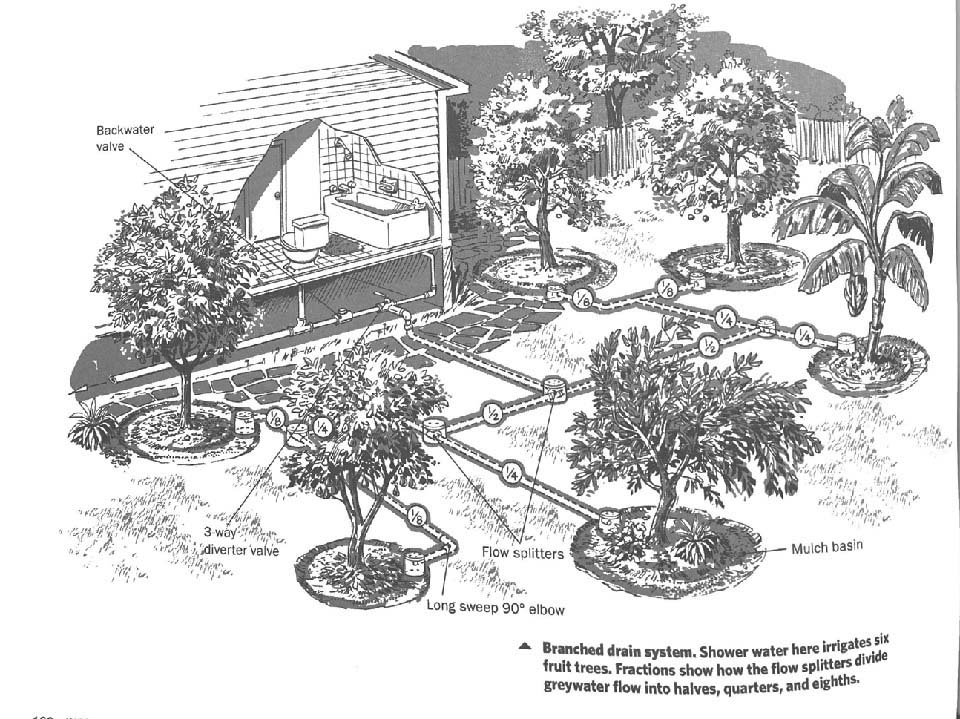
- Graywater sources: Washing machine, shower, bathtub, and/or sinks (excluding kitchen sinks).
- Collection plumbing: Pipes to transport graywater from the house to one or more points outside of the house.
- Distribution plumbing: Plumbing that transports graywater through the landscape and divides it among vegetated mulch basins.
- A receiving landscape: Soil, roots, plants, and mulch basins that contain, cover, purify, and use graywater.
- People: To design, install, and maintain the system, generate graywater, tend the garden, and enjoy the landscape (Ludwig, 2012). System design requires working with an Onsite Wastewater Professional with the appropriate certification level. Find your local certified professional at Utah Department of Environmental Quality Onsite Wastewater Program website: https://deq.utah.gov/waterquality/onsite-wastewater-program
Your System
If considering your own graywater system, first call your local health department about graywater permitting in your area (https://ualhd.org/). If your local health department does not administer a graywater system program, inquire whether/when they plan to do so. Next, ensure your Onsite Wastewater Professional works with your landscape design to integrate graywater with your other landscaping goals and plant water needs.
Retrofitting for graywater may be possible but feasibility and cost will vary depending on the design of your building and plumbing. Special considerations may be necessary if your home uses a septic system as they require a certain amount of water flow to properly function.
Best Management Practices for Enhancing Soil Health
When irrigating with graywater, it is essential to consider what you put down the drain, especially commercial cleaners. Choosing plant- and soil-biocompatible cleaners (the breakdown products are good for/do not harm the environment) is a major way to improve graywater quality (Ludwig, 2012). From Utah’s graywater rule:
“The use of plant friendly products is important when using graywater for irrigation. Products should be salt and borax free in addition to being biodegradable and non-toxic. Plant friendly products are key when reusing graywater. Chlorine bleach can be harmful to plants and should be diverted to your sewer system. Hydrogen peroxide based products can be used instead of bleach. The pH of your graywater also needs to be considered. Most soaps do not change the pH but some do. Liquid soaps typically do not change the pH of graywater. Bar soaps can make the water very basic. Choosing plants that are not affected by pH is best if you are not sure if the pH is being affected by the products you typically use.
Graywater Compatible Plants:
(a) trees and fruit trees;
(b) bushes, shrubs, and vines;
(c) larger perennials and annuals; and
(d) food crops for which the graywater will not come into contact with the edible portion of the plant.
Graywater Incompatible Plants:
(a) acidic soil-loving plants;
(b) seedlings or young plants”
(Utah Office of Administrative Rules, 2020)
Why Graywater in Utah?
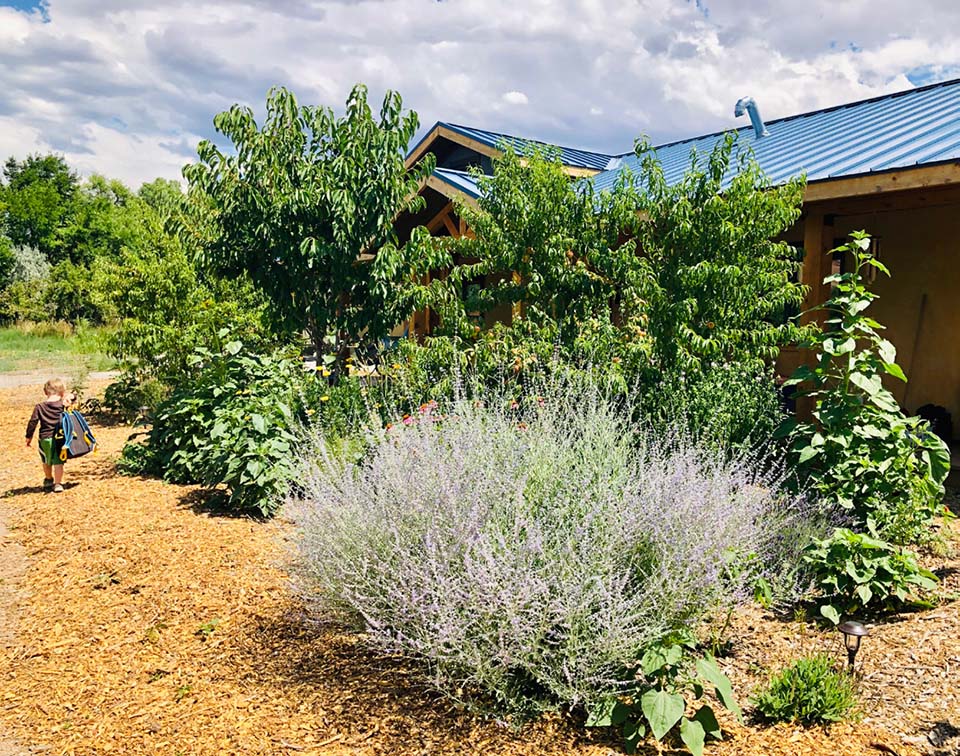
In the western United States, water is treated as currency. As with money, its value is determined not by a single use, but by the many exchanges it experiences moving through the economic system. The more we utilize our water resources in secondary and even tertiary ways, the more we stand to gain in value, and the more we show our initiative in conserving a limited resource. According to the United States Geological Survey (2010), Utah is both the second driest state and second highest per capita domestic water consumer in the nation. The pie chart on page 2 demonstrates how much water is used on average for landscaping. A household graywater system could cut your residential water use significantly and is one great way to help conserve our scarce western water supply, saving money on municipal water costs as well.
Graywater Resources
-
https://rules.utah.gov/publicat/code/r317/r317-401.htm
Utah Administrative Code: Graywater Systems -
https://ualhd.org/
Your local health department -
http://greywateraction.org/
A collaborative group of educators, designers, builders, and artists who educate and empower people to build sustainable water culture and infrastructure -
http://greywateraction.org/content/about-greywaterreuse
Graywater system design examples and FAQs. -
http://oasisdesign.net/greywater/law/#arizona
Oasis Design provides examples of the Arizona greywater law and permitting process -
http://www.nmenv.state.nm.us/fod/LiquidWaste/graywater.html
New Mexico greywater definition and law -
https://www.epa.gov/waterreuse
U.S. EPA on water recycling
References
- Brain, R., Adams, J., & Lynch, J. (2017). Mitigating projected impacts of climate change and building resiliency through permaculture: A community ‘Bee Inspired Gardens’ movement in the desert Southwest, USA. WIT Transactions on Ecology and the Environment 223, ISSN 1743-3541 (on-line). Retrieved from: https://www.witpress.com/elibrary/wit-transactions-on-ecology-andthe-environment/223/36437
- Environmental Protection Agency. (2018). How we use water. Retrieved from: https://www.epa.gov/watersense/how-we-use-water
- Lancaster, B. (2010). Rainwater harvesting for drylands and beyond: Volume 2 water-harvesting earthworks. Rainsource
Press: Tucson, AZ. - Ludwig, A. (2012). Create an oasis with Greywater: Choosing, building and using greywater systems. Oasis Design: Santa Barbara, CA.
- Milligan, M. (2018). Glad you asked: Does Utah really use more water than any other state? Utah Geological Survey. Retrieved from: https://geology.utah.gov/map-pub/survey-notes/glad-you-asked/does-utah-use-more-water/.
- United States Geological Survey. (2010). Estimate use of water in the United States in 2010. Retrieved from: http:// pubs.usgs.gov/circ/1405/pdf/circ1405.pdf
- Utah Office of Administrative Rules. (2020). R317. Environmental Quality, Water Quality. Rule R317-401. Graywater Systems. Retrieved from: http://www.rules.utah.gov/publicat/code/r317/r317-401.htm.
Revised May 2020
Utah State University Extension
Peer-reviewed fact sheet
Authors
Roslynn Brain, Jeremy Lynch & Kelly Kopp (Departments of Environment & Society, and Plants, Soils & Climate: Utah State University)
Updated with revised rule in 2020 by Roslynn Brain McCann, Jeffrey Adams (TerraSophia LLC) & Orion Rogers (Southeast Utah Health Department)
Related Research





